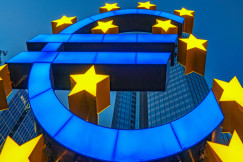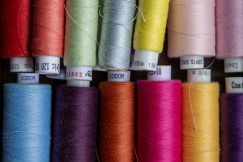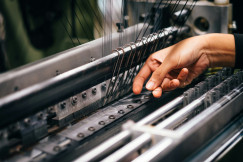Library and support resources
29 July 2025
Emotions and motivation: What drives people to repair their clothes?
Library and support resources
29 July 2025
Social dimension
Sustainable competitiveness
Regulation and public governance
+10 more
Login / create an account to be able to react
-
30

A paper in the Journal of Cleaner Production shows that both emotional experiences, positive and negative, play a key role in why consumers choose repair over disposal. Supporting repair-friendly services and messaging that taps into these motivations could make textile waste reduction more effective.
Topics
Albania
Armenia
Austria
Belgium
Bosnia and Herzegovina
Bulgaria
Croatia
Cyprus
Czechia
Denmark
Estonia
EU-27
Finland
France
Georgia
Germany
Greece
Hungary
Iceland
Ireland
Italy
Kosovo
Latvia
Liechtenstein
Lithuania
Luxembourg
Malta
Moldova
Montenegro
Netherlands
North Macedonia
Norway
Poland
Portugal
Romania
Serbia
Slovakia
Slovenia
Spain
Sweden
Switzerland
Türkiye
Ukraine
Other
Academic / Research and VET Institutions
Business Support Organisation
Company with 250 or more employees
Cluster Organisations
Consumer Organisations
Cultural and Heritage Organisations
Destination Management & Marketing Organisations
EU Institutions
Financial Institutions and Investors
Industry Associations and Chambers of Commerce
International Organisations
Media / Journalist Organisations
National authorities
Networks and Federations / Confederations
NGOs / Non-profits
Notified Bodies
SMEs (a company with less than 250 employees)
Social Economy Entity
-
Transition Pathway's building blocks
-
-
Social dimension
-
Sustainable competitiveness
-
Regulation and public governance
-
-
Industrial ecosystems
-
-
Textile
-
-
Textiles ecosystem areas
-
-
Fibres, yarns and fabrics
-
Apparel and clothing accessories
-
Household/interior textiles
-
Technical textiles
-
Leather and fur
-
Footwear
-
Research and Innovation
-
Waste management, reuse and repair
-
Business support and Communication
-
Share
The paper 'Promoting textile product repair services in the European setting: do emotions shape consumers’ evaluations?' by Debora Bettiga Marco Mandolfo, and Giuliano Noci examines the factors that enable or hinder sustainable business model innovation (SBMI) across industries. The authors explore how both internal organisational dynamics and external pressures influence firms’ efforts to shift towards more sustainable models, with implications for businesses, policymakers, and support ecosystems alike.
Drawing case studies across various countries the paper identifies four key enablers of successful SBMI: long-term vision, leadership commitment, resource availability, and multi-stakeholder collaboration. Equally important, it flags common barriers such as short-termism, limited internal capabilities, and regulatory ambiguity.
The analysis also differentiates between proactive and reactive SBMI strategies. Proactive innovators tend to integrate sustainability into their core values and long-term planning, while reactive firms adjust their models in response to external drivers such as regulation or market shifts. This distinction helps illustrate the role that enabling environments and cultural shifts play in accelerating system-level change.
Key Takeaways
- Enablers of SBMI include leadership commitment, sufficient internal resources, a long-term sustainability vision, and stakeholder partnerships.
- Common barriers are short-term financial focus, lack of internal knowledge, and unclear or inconsistent regulatory frameworks.
- Proactive firms embed sustainability strategically, while reactive firms adjust due to external pressures, highlighting the importance of culture and mindset.
- A combination of internal capacity and enabling policy or market conditions is vital for driving sustainable business transformations.
The paper highlights the need to address emotional motivations - such as regret or product attachment when designing repair services or campaigns that encourage more sustainable textile behaviour.
Read the full paper 'Promoting textile product repair services in the European setting: do emotions shape consumers’ evaluations?' by Debora Bettiga Marco Mandolfo, and Giuliano Noci here.
Comments (0)
See also
Small mid‑caps: bridging the gap between SMEs and large companies
- Categories
- Infrastructure Investments and funding R&I, techniques and technological solutions +28 more
The EIT KICs Position Paper for a Circular and Sustainable Fashion and Textiles Industry in Europe
- Categories
- Infrastructure Investments and funding R&I, techniques and technological solutions +20 more
The EU’s 2024 Industrial Report reveals green and digital pathways for textiles transformation
- Categories
- Infrastructure Investments and funding R&I, techniques and technological solutions +16 more




